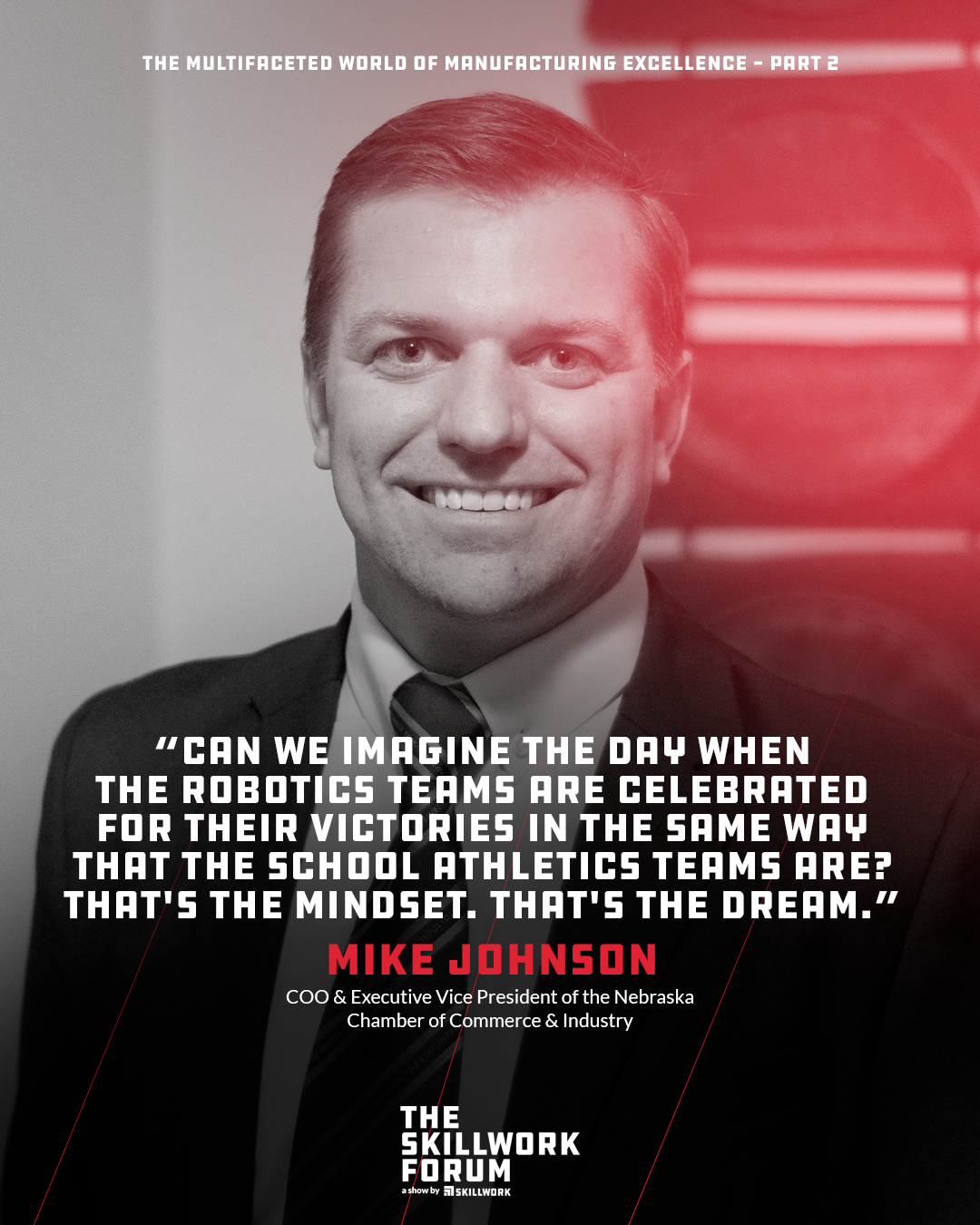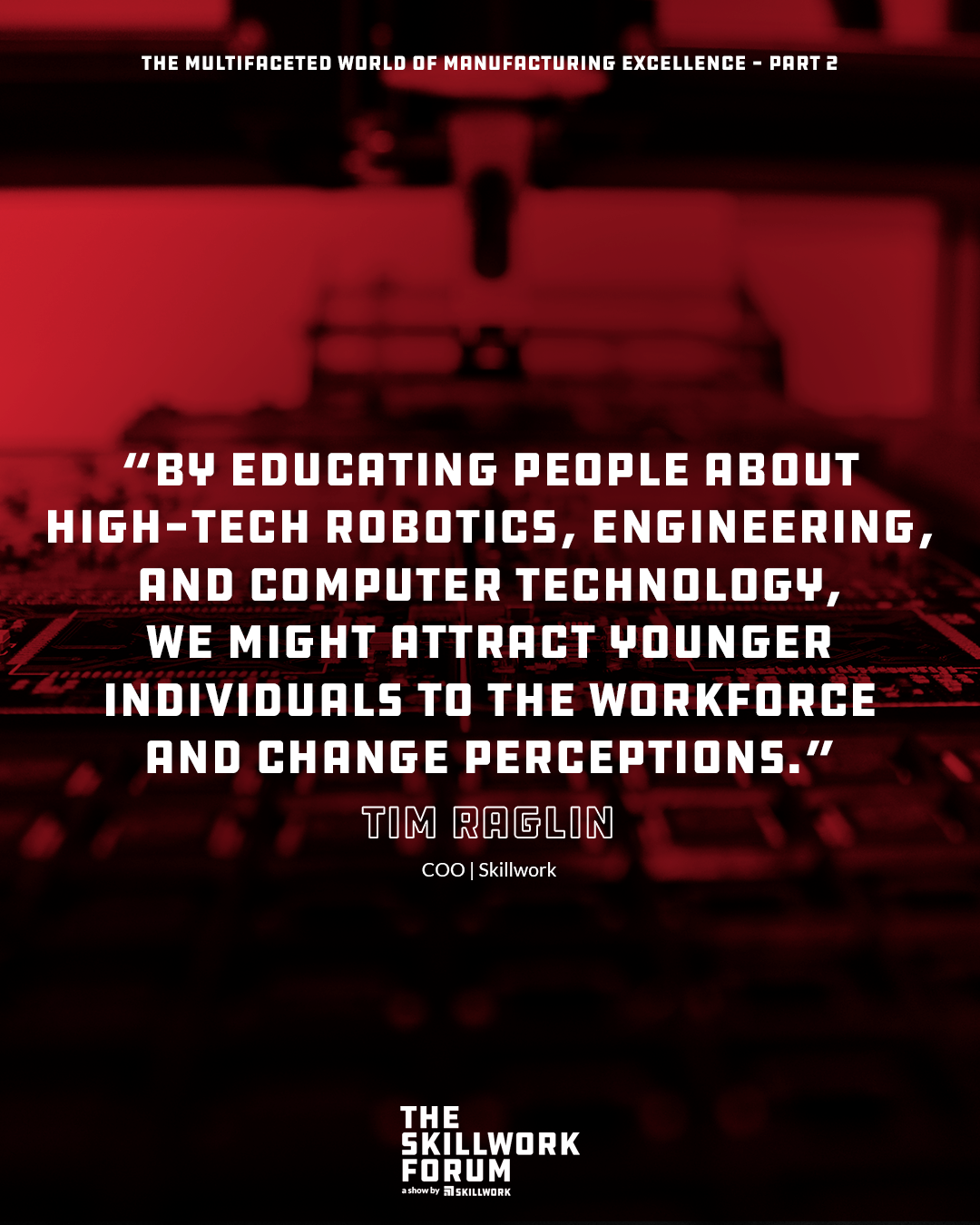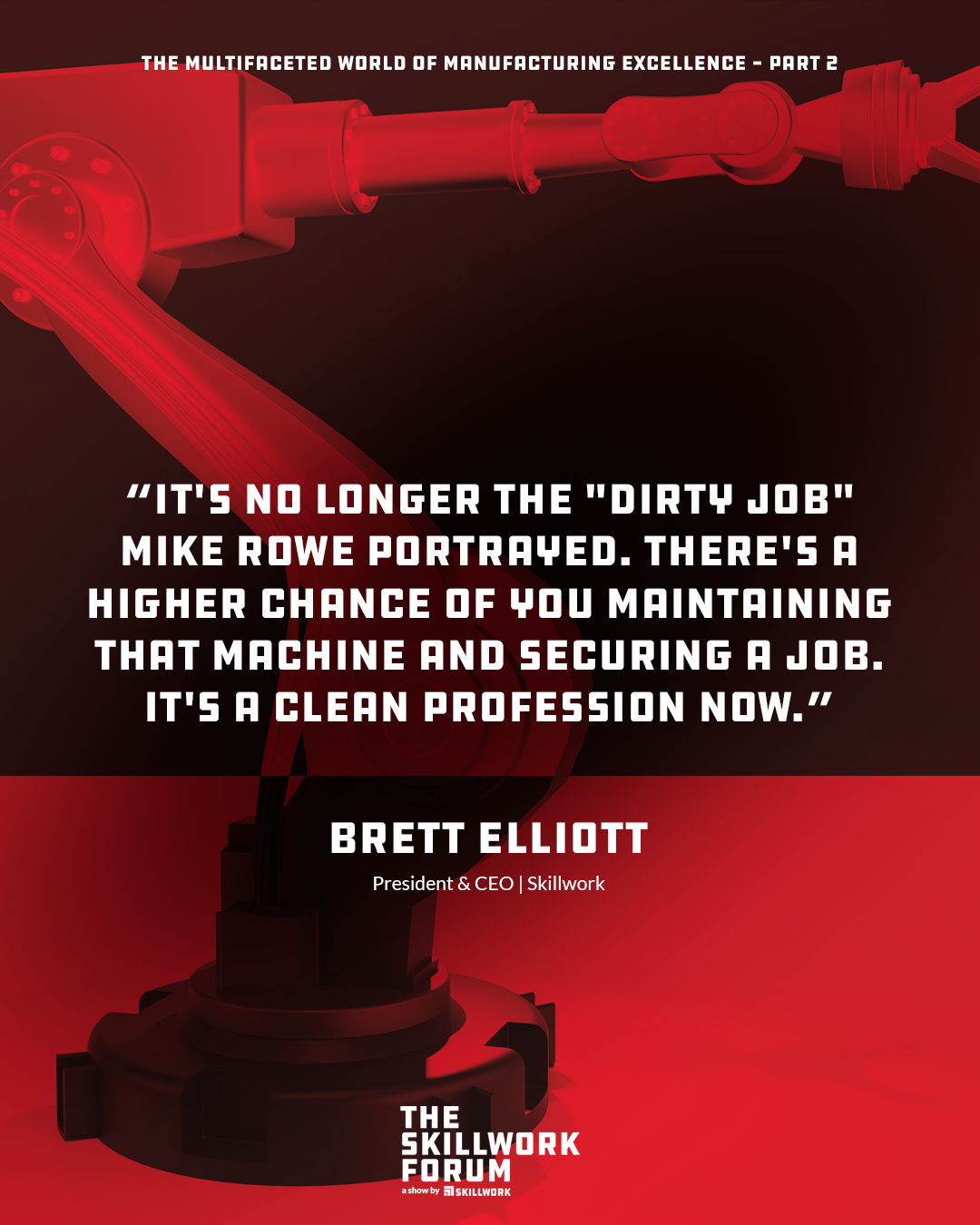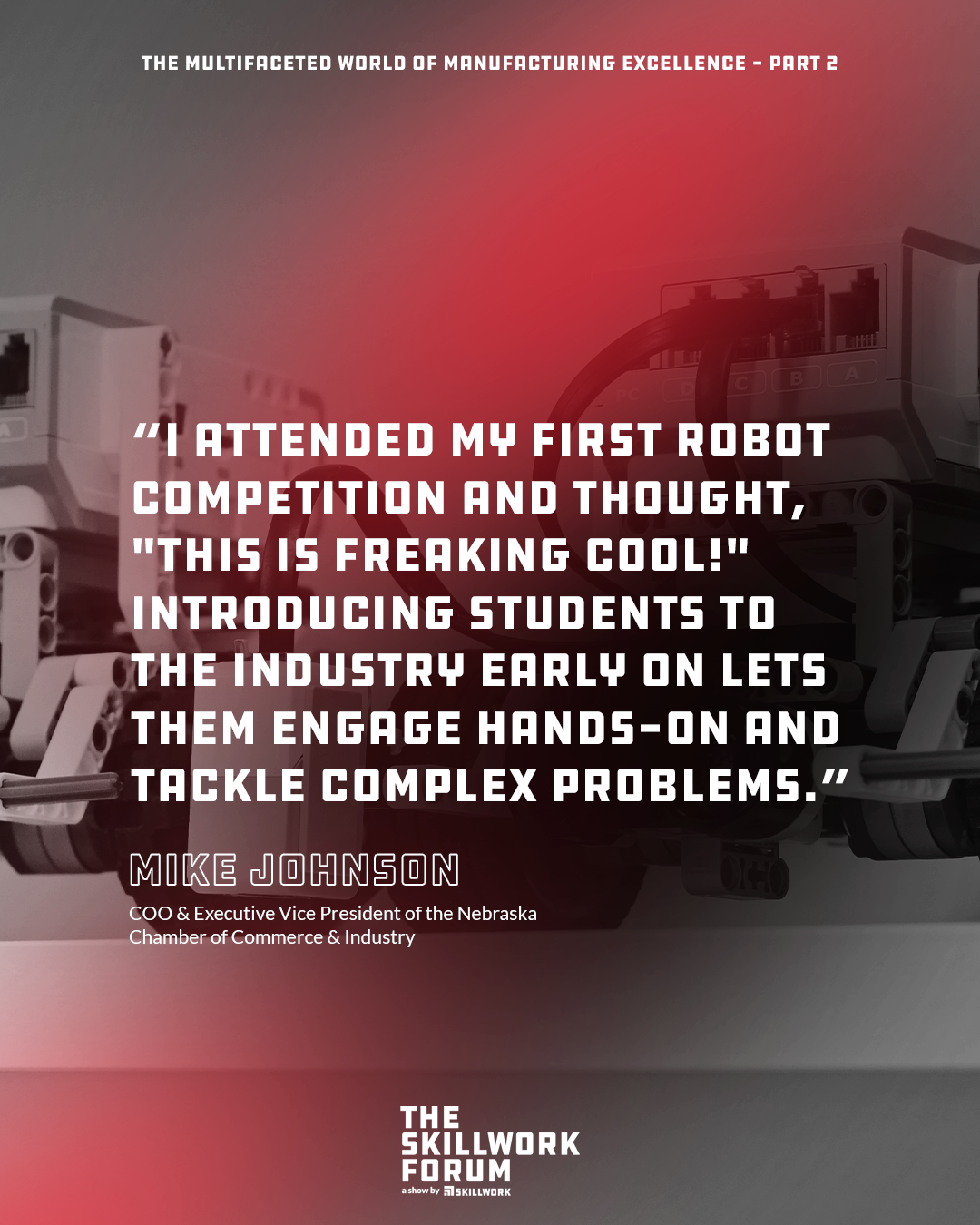The 4th Industrial Revolution and Manufacturing In Nebraska [Part 2]
If you desire, you can listen to this episode on Spotify.
This article is part two of a conversation we had with Mike Johnson, COO and Executive Vice President of Manufacturing for the Nebraska Chamber of Commerce, about skilled trades education. In this part, we shift gears, turning our attention to the Fourth Industrial Revolution in manufacturing.
Adopting the Fourth Industrial Revolution In Manufacturing
We were at a forum recently that brought leaders from across the country together, and they basically said that we're not nearly as far along this trajectory of the Fourth Industrial Revolution in manufacturing as we think. In reality, we've kind of dressed up the Third Industrial Revolution and called it the 4th Industrial Revolution in manufacturing.
Now, there certainly are companies successfully adopting 4th Industrial Revolution technology. And they’re seeing the benefits—more consistent products, less downtime, and safer working environments. But Mike says he’s seen the data, and Nebraska is objectively behind.
We’re convinced that the key to moving forward is getting everyone in the sector more familiar and comfortable with the latest technology like AI, robotics, augmented reality, and automation in manufacturing. Tradesmen, in particular, need to see the upside of adopting these technologies and be convinced that they aren’t in danger of losing their jobs.
Mike uses production line workers who perform manual tasks as an example.
Let's hypothetically say that a robot or a belt or some system of automation is implemented to relieve the physical attributes of their job. Now, the worker is free to do higher, value-added work. So it's more engaging for the employee and higher capacity for that line, increasing production for the company—a win-win.
There are challenges to using a lot of technology, though. If you bring a robot in that doesn't talk to the robot down the line, you can’t create a truly smart factory. Facilities need to consider the interconnectedness of the technology they want to implement before installing it.
Exposing Students to Manufacturing By Engaging Schools
Not only do we need those already working in the trades to adopt this technology, but we also need to increase awareness about the high-tech aspects of manufacturing to attract younger people into the trades. This can happen by engaging schools in conversations with manufacturing facilities.
Brett mentioned that a new school in Nebraska built a nice welding facility as part of it. However, traditional technical skills like welding aren’t what kids are going to be doing when they graduate. There's a need to change the narrative around the trades and introduce manufacturing as a sector that uses cutting-edge technology to begin inspiring students early.
Mike stressed the potential impact of robotics, citing successful examples from Nebraska, where robotics programs have really taken off. He envisioned a scenario where achievements in robotics are celebrated similarly to school athletic team victories. This kind of exposure to industry technology is what schools need to be offering students.
Studying Nebraska's Economic Landscape
Next, Tim asked Mike about a recent monthly roundtable he dialed in to. In his response, Mike highlights three studies commissioned by the Chamber, each spearheaded by Ted Abernathy and his firm, Economic Leadership. Here's a summary of each:
1. Nebraska Competitiveness Study
The Nebraska Competitiveness Study is a comprehensive economic analysis of Nebraska. This study evaluates and contrasts Nebraska's tax structures, business landscapes, workforce, and overall workplace environments with neighboring states and the country as a whole. The primary objective is to define Nebraska’s economic competitive edge and to provide a clearer understanding of its position relative to other states and the nation.
2. Immigration Study
The Immigration Study delves into potential solutions to the low unemployment rate in Nebraska, which has been hovering around 2%. The essence of this study is to investigate how legal immigration can play a pivotal role in addressing workforce availability issues and unlocking enhanced productivity across various sectors in Nebraska. It aims to present effective strategies for legal settlement of immigrants in Nebraska to address the workforce shortage.
3. Manufacturing Study
The Manufacturing Study shines a light on Nebraska's accomplishments in the sector, like the unprecedented employment surge and the tripling of the GDP since 2006 in manufacturing. The goal is to identify challenges and opportunities in the manufacturing sector, primarily related to workforce availability.
The studies are scheduled for release in February 2024.
Initially, these monthly calls hosted by Mike, where Tim heard about these studies, were open forums, but they’ve evolved into impactful sessions focused on critical content and actionable insights for manufacturers. Last month, Mike had the privilege of hosting the FBI, providing intriguing insights into cybersecurity, an area of growing importance in today’s digital age. We encourage every manufacturer in Nebraska to tune in.
Additionally, business leaders and manufacturers can attend the Chamber’s biannual policy councils to deliberate and shape legislation. Participants have the opportunity to express their stance on diverse bills and contribute to the legislative process, enabling the lobby team to accurately represent the business community’s perspective and advocate for beneficial policies like increasing CTE funding.
And if you don’t live in Nebraska, we encourage you to seek out these sorts of programs and initiatives in your state. These are important conversations for industry leaders to have, and we’re grateful for people like Mike pushing these initiatives forward in the Midwest.


